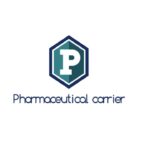1. Purpose
The purpose of this Standard Operating Procedure (SOP) for Resuming Aseptic Area after Maintenance Activities is to provide clear guidelines for the proper resumption of aseptic areas within [Company Name] following maintenance activities. This SOP for Resuming Aseptic Area after Maintenance Activities aims to ensure the restoration of a sterile environment and prevent cross-contamination after any maintenance interventions.
2. Scope
This SOP for Resuming Aseptic Area after Maintenance Activities applies to all personnel involved in maintenance activities and those responsible for resuming aseptic areas within [Company Name]. It encompasses the steps required to ensure the aseptic integrity of the area after maintenance.
3. Definitions involved in Resuming Aseptic Area after Maintenance Activities
3.1 Aseptic Area:
A controlled environment maintained in a sterile condition to prevent microbial contamination.
3.2 Maintenance Activities:
Any activities involving repair, calibration, or adjustments to equipment or systems within the aseptic area.
3.3 Disinfection:
The process of reducing the number of microorganisms on surfaces to a safe level.
4. Safety Precautions and Personal Protective Equipment (PPE)
5. PPE Requirements
5.1 Before resuming the aseptic area, personnel shall wear the required PPE, including gloves, face masks, and sterile gowns.
5.2 PPE shall be properly inspected for any damage or wear before use.
6. Safety Assessment
6.1 Conduct a safety assessment to ensure that all maintenance activities have been completed, and the area is safe for resumption.
6.2 Ensure that equipment is properly reassembled, calibrated, and operational.
7. Area Preparation and Disinfection
8. Removal of Debris
8.1 Remove any tools, materials, or debris left behind after maintenance activities.
8.2 Properly dispose of waste materials according to company guidelines.
9. Surfaces Disinfection
9.1 Use an approved disinfectant to clean and disinfect all surfaces within the aseptic area, including work surfaces, equipment, and walls.
9.2 Follow the manufacturer’s instructions for the appropriate contact time and application method.
10. Air Handling System
10.1 Ensure that the air handling system has been properly maintained and filters replaced if necessary.
10.2 Run the air handling system to ensure the circulation of clean, filtered air throughout the aseptic area.
11. Validation and Monitoring
12. Initial Monitoring
12.1 Conduct initial environmental monitoring to ensure that the aseptic area meets established cleanliness and microbial control standards.
12.2 Use appropriate sampling methods and equipment for microbial assessment.
13. Continuous Monitoring
13.1 Implement a continuous monitoring plan to ensure the ongoing cleanliness and sterility of the aseptic area.
13.2 Regularly perform environmental monitoring, and adjust disinfection practices as needed.
14. Documentation and Recordkeeping
15. Resumption Log
15.1 Record details of the resumption process, including date, time, personnel involved, disinfection procedures, and monitoring results.
15.2 Ensure that the resumption log is signed and dated.
16. References and Attachments
17. References
[List relevant guidelines, manufacturer’s recommendations, and industry references related to resuming aseptic areas after maintenance.]
18. Attachments
[List any attached documents, disinfection protocols, or monitoring plans.]
19. Revision History
[Document the revision history of this SOP for Resuming Aseptic Area after Maintenance Activities, including dates, changes made, and personnel responsible.]
- For more articles, Kindly Click here.
- For pharmaceutical jobs, follow us on LinkedIn
- For Editable SOPs in word format contact us on info@pharmaceuticalcarrier.com
- For more information kindly follow us on pharmaguidelines.co.uk
Pharmacareer team is a team of Experts from every department of Pharmaceutical industry having enriched experience. Experts have work experience of many multinational pharmaceutical industries worldwide.


